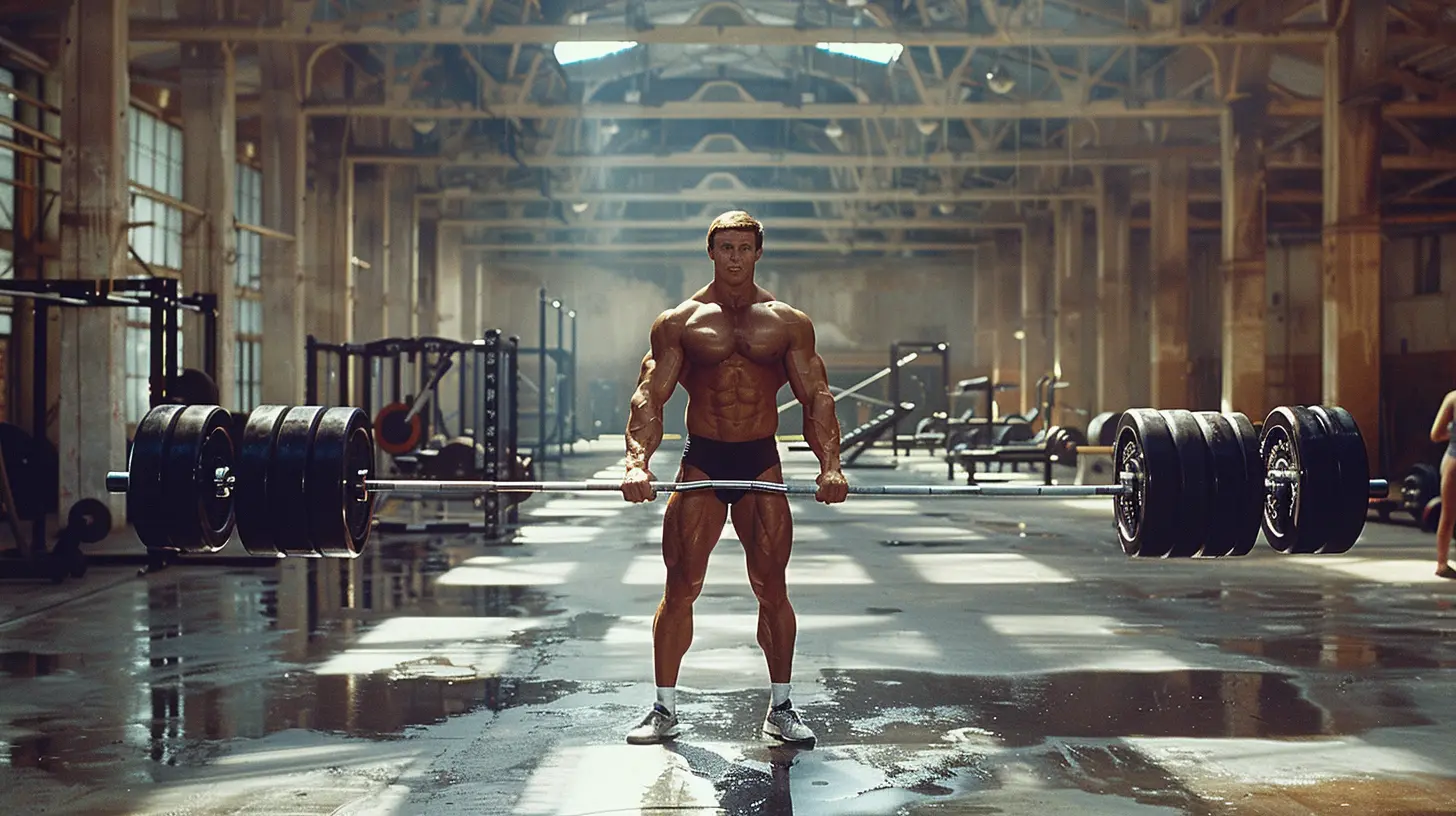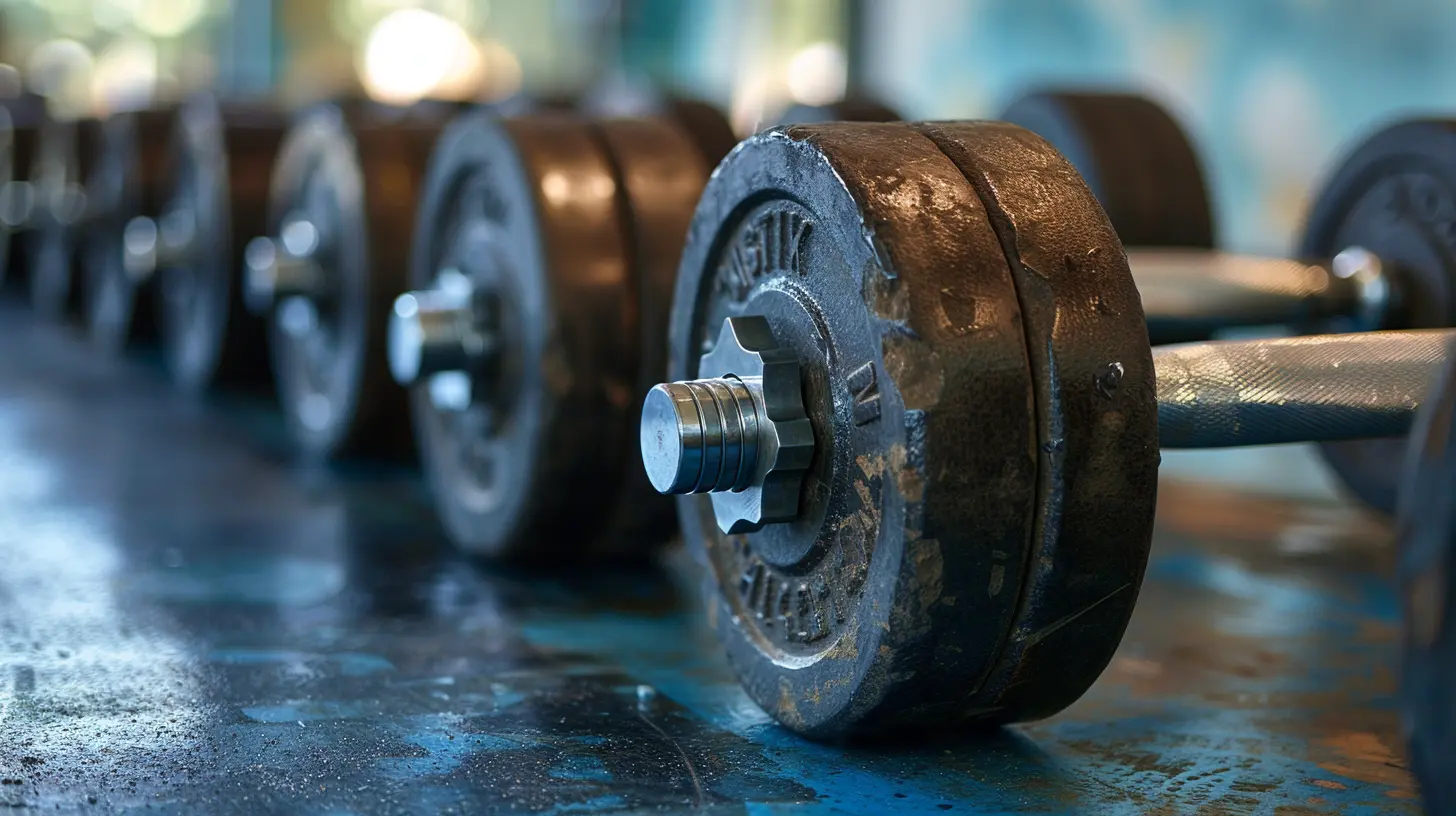How to Train Like an Athlete in the Gym
23 July 2025
Training like an athlete isn’t just about lifting heavy weights or running endless miles. It’s about building speed, strength, endurance, agility, and flexibility—all the qualities that make athletes excel in their respective sports. Whether you're looking to enhance your performance, boost your stamina, or just train with purpose, adopting an athletic mindset in the gym can take your fitness to the next level.
But how do you train like an athlete? What kind of exercises should you focus on? And how can you optimize your workouts to improve speed, power, and endurance? Let’s break it all down step by step!

The Athlete’s Approach to Training
Athletes don’t just train for aesthetics; they train for performance. That means their workouts are designed to enhance movement, strength, mobility, and resilience. If you want to train like an athlete, you need to focus on functionality rather than just looks.Instead of isolating one muscle group at a time, athletic training incorporates compound movements, explosive exercises, and agility drills. The result? A body that not only looks strong but performs at its peak.

Key Elements of Athletic Training
If you want to train like an athlete, your workout routine should include a mix of strength training, conditioning, mobility work, and proper recovery. Let's break each one down.1. Strength Training for Explosive Power
Strength is the foundation of athletic performance. Athletes train for functional strength, meaning they focus on movements that mimic real-world actions. Here’s how you can build athletic strength:Compound Movements
Forget endless bicep curls—athletes focus on exercises that work multiple muscle groups at once. These include:- Squats – Build lower-body power and core stability.
- Deadlifts – Strengthen the posterior chain (glutes, hamstrings, and lower back).
- Pull-Ups – Improve upper-body strength and grip.
- Bench Press – Develop upper-body pushing power.
These exercises create a strong foundation, boost coordination, and develop explosive strength.
Explosive Movements
Athletes don’t just lift heavy—they move fast. Incorporate these exercises to build power and speed:- Power Cleans – Train full-body explosiveness.
- Kettlebell Swings – Improve hip power and endurance.
- Box Jumps – Build explosive lower-body strength.
- Medicine Ball Slams – Strengthen the core while enhancing power.
By adding explosive exercises to your routine, you’ll develop quick, powerful movements that translate to better athletic performance.
2. Speed and Agility Training
Athletes aren’t just strong—they’re fast and agile. To develop speed, acceleration, and quick footwork, include these drills in your training:Sprint Workouts
Sprinting builds explosive power, endurance, and cardiovascular fitness. Try different variations:- Short Sprints (10–30 meters) – Improve acceleration and power.
- Hill Sprints – Increase lower-body strength and endurance.
- Resisted Sprints – Use resistance bands or sleds to build explosiveness.
Agility Drills
Agility is what separates great athletes from the rest. To sharpen your footwork and reaction time, add:- Ladder Drills – Improve coordination and foot speed.
- Cone Drills – Enhance agility and directional changes.
- Side Shuffles – Strengthen lateral movement.
Speed and agility work will help you move like an athlete—whether that’s sprinting across a field or dodging obstacles in real life.
3. Conditioning for Endurance
Athletes need stamina to perform at their best for extended periods. Conditioning workouts improve cardiovascular fitness, endurance, and recovery ability.High-Intensity Interval Training (HIIT)
HIIT workouts mimic the start-stop nature of most sports, making them an excellent choice for athletic training. Try:- Sled Pushes – Full-body conditioning that builds endurance and power.
- Battle Ropes – Improve upper-body endurance and strength.
- Rowing Machine Intervals – Boost cardiovascular fitness and total-body conditioning.
- Jump Rope – Enhance coordination, endurance, and foot speed.
HIIT workouts keep your heart rate high, burn fat, and improve your ability to recover quickly—just like an athlete needs to.
4. Mobility and Flexibility for Injury Prevention
Athletes can’t afford injuries. Mobility and flexibility training ensure your joints move properly and reduce injury risk.Dynamic Warm-Up
Before you train, prepare your body with:- Leg Swings – Loosen up the hips and hamstrings.
- Arm Circles – Warm up the shoulders.
- Hip Openers – Improve mobility and flexibility for better movement.
Post-Workout Stretching
After training, spend time stretching and foam rolling to aid recovery. Focus on:- Hamstring Stretch – Prevent tightness in the legs.
- Hip Flexor Stretch – Improve hip mobility.
- Thoracic Spine Rotation – Enhance upper-body mobility.
A flexible, mobile body moves more efficiently and resists injury—key factors in training like an athlete.
5. Recovery and Nutrition
Athletes train hard, but they recover even harder. Proper recovery allows for continued progress and prevents burnout.Sleep Like a Champion
Rest is when your body repairs and grows stronger. Aim for at least 7–9 hours of quality sleep per night to optimize performance.Fuel Your Body
Your workouts are only as good as the fuel you provide your body. Focus on:- Protein – Supports muscle repair and recovery.
- Healthy Fats – Provide sustained energy.
- Complex Carbs – Fuel intense workouts and replenish glycogen stores.
- Hydration – Drink enough water to stay energized and prevent cramps.
By prioritizing sleep and proper nutrition, you’ll recover faster, perform better, and feel stronger in the gym.

Example Workout Routine to Train Like an Athlete
Want a structured plan? Here’s a sample weekly workout routine to get you started:Day 1: Strength & Power
- Squats – 4x5- Deadlifts – 4x4
- Box Jumps – 4x6
- Sled Pushes – 3x40 yards
Day 2: Speed & Agility
- Sprints (30m) – 5x- Ladder Drills – 3 rounds
- Cone Drills – 3 rounds
- Jump Rope – 3x1 min
Day 3: Conditioning & Core
- Rowing Machine (HIIT) – 5x30 sec sprint- Battle Ropes – 4x20 sec
- Medicine Ball Slams – 3x12
- Hanging Leg Raises – 3x15
Day 4: Mobility & Recovery
- Foam Rolling – 10 min- Yoga/Stretching – 30 min
Day 5: Explosive Strength
- Power Cleans – 4x4- Kettlebell Swings – 3x15
- Bulgarian Split Squats – 3x8 (each leg)
- Sprint Intervals – 6x40m
Following this kind of structured plan will help you build strength, speed, and endurance—just like an athlete.

Final Thoughts
Training like an athlete isn’t about bodybuilding—it’s about becoming stronger, faster, and more resilient. By focusing on functional strength, speed, agility, endurance, and recovery, you’ll develop the power and athleticism of the pros.So, are you ready to ditch the boring workouts and start training like a true athlete? Hit the gym with purpose, challenge yourself, and build a body that performs as well as it looks!
all images in this post were generated using AI tools
Category:
Gym TrainingAuthor:

Preston Wilkins
Discussion
rate this article
1 comments
Kyle Sanders
Channel your inner athlete: sweat, smile, and maybe sneak in a donut reward!
August 14, 2025 at 3:15 AM

Preston Wilkins
Absolutely! Embracing the balance of hard work and treats can make training more enjoyable. Sweat it out, enjoy the journey, and reward yourself!


